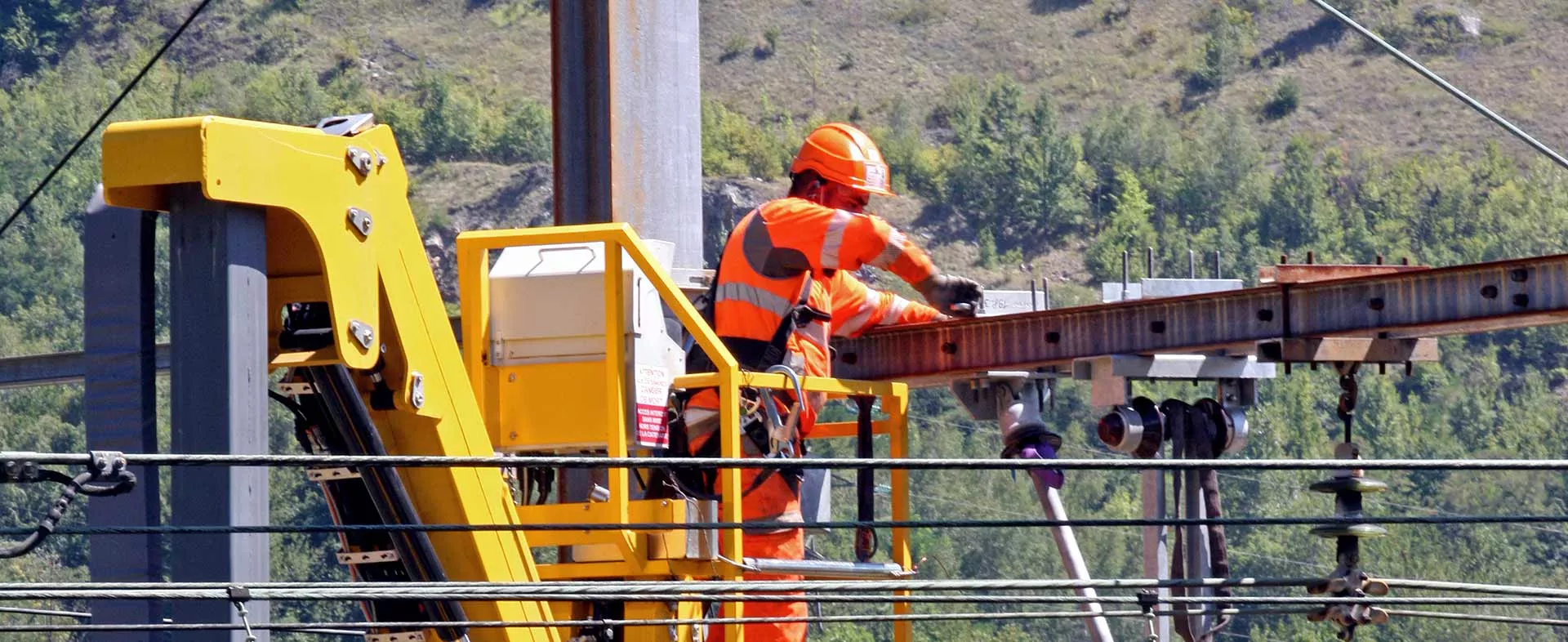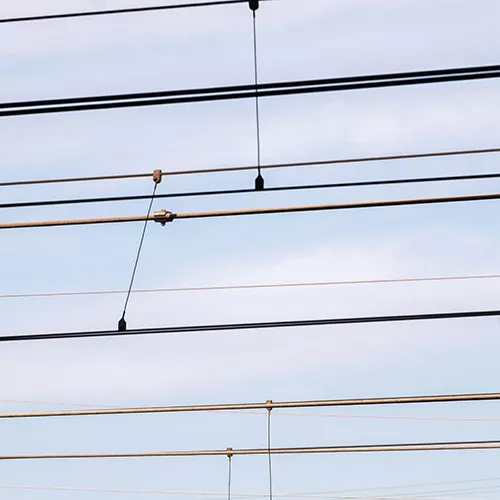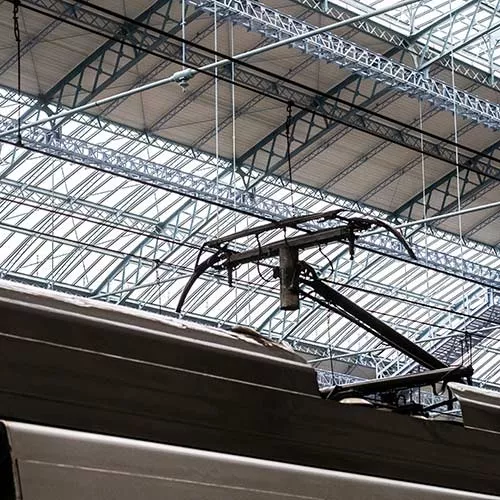
What happens when there’s a catenary incident?
Catenary lines are critical to rail traffic, powering trains’ engines as well as heating and air conditioning systems. How do they work? What happens if they’re not working? We take a closer look at this critical equipment.
All about catenaries and pantographs

Catenary lines
Catenaries are the power lines that supply trains with electricity: suspension wires are made of bronze or aluminium, and contact wires made of copper. Power is transmitted from the catenary to the train through the contact strip of a pantograph, the Z-shaped apparatus mounted on top of the train.
On average, catenaries are 5.20 metres above ground level, but can be as low as 4.31 metres under overpasses and in tunnels, and as high as 6.20 metres at level crossings.

The pantograph
The pantograph is the articulated Z-shaped arm on top of the train. It’s around 2 metres long. What’s it for? It draws electric current from the catenary to the train as its contact strip—the horizontal piece at the top made of carbon or copper—slides along the wire. The contact strip needs fine-tuning and is inspected at least every 7,500 km, or every 2 to 3 days. Its carbon and copper strips are replaced when they begin to wear. Contact between the catenary and contact strip must be constant and stable.
What is a catenary incident?
Weather-related risk
Catenary lines have a maximum lifespan of 60 years. They are robust but can be damaged by bad weather.
In the winter, ice can form on the copper wire, preventing the train from drawing electricity optimally. In the summer, extreme heat can cause the wire to expand and go slack. To prevent damage, we install pullies and counterweights to make sure wires are always taut.
Another risk: falling trees
Sometimes a tree falling on the tracks will tear down the catenary. When the lines’ copper wiring breaks, traffic comes to a stop in the affected sector. We immediately despatch our response teams to the scene and cut power to the catenary so our technicians can step in and safely repair the lines.
Did you know?
Repercussions of a downed catenary
Traffic stops
When a catenary is damaged and the power has to be shut off in the affected area, batteries on board can take over for around 30 minutes on average, but trains in the area may be held up.
If at all possible, trains in the area are shifted onto alternate tracks. Repair work can take time: the high voltage and electrocution risk make safety precautions crucial.
Resumption of traffic
Once the catenary is repaired, power is restored and traffic can gradually resume. SNCF is also doing all it can to prevent these kinds of incidents. For example, we use digital cameras to detect any irregularities. And we have an annual schedule for infrastructure maintenance, work that includes replacing catenary contact wires.
Share the article